Are you struggling to achieve crystal-clear vision, or simply overwhelmed by the vast options for prescription lenses for glasses? This comprehensive guide cuts through the complexity, empowering you to select the ideal corrective eyewear tailored to your unique needs, enhancing both clarity and comfort. From understanding your eye exam results to choosing advanced lens materials and coatings, discover how to optimize your vision and explore premium options, including pairing them with exquisite japanese made glasses frames, all designed to solve your vision challenges effectively.
Understanding Your Vision Needs: A Comprehensive Eyeglass Lens Guide
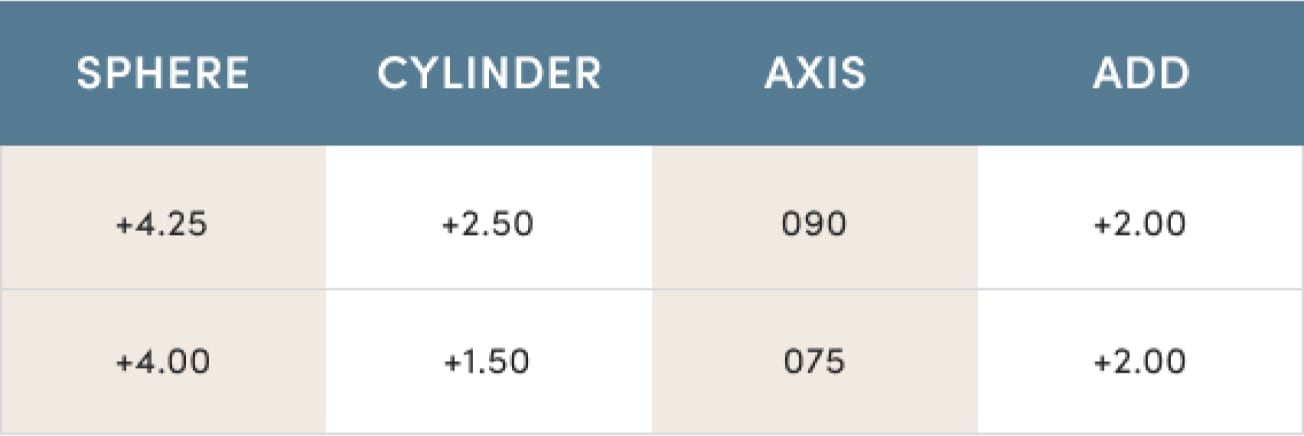
Understanding your vision needs is the foundational step towards selecting the ideal prescription lenses for glasses. These specialized optical components are custom-made to correct your unique visual impairments, ensuring crisp, clear sight for various daily activities. Navigating the world of eyeglass lenses requires a clear understanding of your current vision status and the different types of corrective lenses available. This guide will provide detailed insights into ensuring your spectacle lenses are perfectly tailored to you.
The Importance of an Up-to-Date Prescription Lenses
Having a current and accurate prescription is paramount for optimal vision correction. Your prescription lenses are only as effective as the data they’re based on. An outdated eyeglass prescription can lead to eye strain, headaches, and suboptimal visual clarity.
Eye Exam and Prescription Lenses: Why it’s crucial
A comprehensive eye exam is the starting point for obtaining precise prescription lenses for glasses. During this examination, an optometrist or ophthalmologist evaluates your visual acuity, checks for underlying eye conditions, and determines the exact refractive error that requires correction. It’s critical to know that eyeglass prescriptions are typically valid for a limited period, often 1 to 2 years, with specific validity varying by state law in 2025. This timeframe ensures that any changes in your vision are accounted for, allowing your new corrective lenses to provide the most effective vision correction. Regularly updating your prescription ensures that your optical lenses continue to meet your evolving needs, offering unparalleled visual comfort and sharpness.
Pupillary Distance Measurement for Glasses: Its role in lens accuracy
Beyond the basic power of your prescription lenses, an accurate pupillary distance (PD) measurement is indispensable for the precise crafting of your new eyeglass lenses. The PD is the distance between the centers of your pupils, and it dictates where the optical center of each lens should be placed. If the optical centers of your spectacle lenses are not correctly aligned with your pupils, you may experience distortion, eye strain, or even double vision, regardless of how accurate the prescription power is. This vital measurement can be obtained professionally by your eye care specialist during your eye exam or, in some cases, can be self-measured with careful instruction. Precise PD measurement ensures that your prescription lenses for glasses are perfectly centered, providing optimal clarity and comfort.
For a vast selection of high-quality prescription lenses for glasses that prioritize precision and visual comfort, exploring comprehensive options is essential. A wide range of eyeglass lenses are available to address various vision needs, ensuring you find the perfect match for your lifestyle and prescription. Explore premium prescription lenses for glasses to find options that align with your updated prescription and specific visual requirements.
Deciphering Your Prescription: Single Vision vs. Progressive Eyeglass Lenses
Understanding the different types of prescription lenses is key to making an informed decision about your eyewear. Your lifestyle and visual demands will often dictate whether single vision or progressive lenses are most suitable for your vision correction.
Progressive vs Single Vision Lenses: Understanding the difference
The choice between progressive vs single vision lenses hinges on your specific visual needs. Single vision lenses are designed to correct one focal distance only. This means they are either for distance vision (like driving or watching TV), intermediate vision (computer work), or near vision (reading). They offer consistent clarity across the entire lens for that single focal point. In contrast, progressive lenses, also known as multifocal eyeglass lenses or no-line bifocals, offer multiple focal points within a single lens without any visible lines. This allows for a seamless transition between distance, intermediate, and near vision, making them a popular choice for individuals who require correction for multiple visual zones. The lens technology in progressive lenses enables a smooth change in power, providing clear vision at all distances with a natural feel, improving overall optical clarity. This comprehensive approach to vision correction also extends to specialized eyewear, such as when you shop prescription sunglasses online for outdoor activities.
Specialty Lens Needs: Bifocals and Astigmatism Correction Lenses
Beyond standard single vision and progressive options, some individuals require specialty lens needs such as bifocals or astigmatism correction. Bifocal lenses feature two distinct optical powers, typically with a visible line separating the distance and near segments. While less aesthetically seamless than progressives, they provide clear, defined zones for specific tasks. For those with astigmatism, a common refractive error where the cornea or lens has an irregular curvature, astigmatism correction lenses (often referred to as toric lenses) are necessary. These corrective lenses are specifically designed to compensate for the uneven curvature, ensuring light focuses correctly on the retina and eliminates blurriness or distortion. Due to their intricate design and the precision required in their manufacturing, bifocal and astigmatism correction lenses are often more expensive to replace. The added complexity in their fabrication ensures precise vision correction for these specific visual challenges.
To truly optimize your visual experience, selecting the right prescription lenses for glasses based on these detailed insights is crucial. Whether you need single vision, progressive, bifocal, or astigmatism correction lenses, understanding your options will lead to the best possible vision correction. Browse our selection of prescription lenses for glasses to find the perfect eyeglass lenses that cater to your specific visual requirements and lifestyle, ensuring optimal optical clarity and comfort.
Decoding Prescription Lens Types and Materials
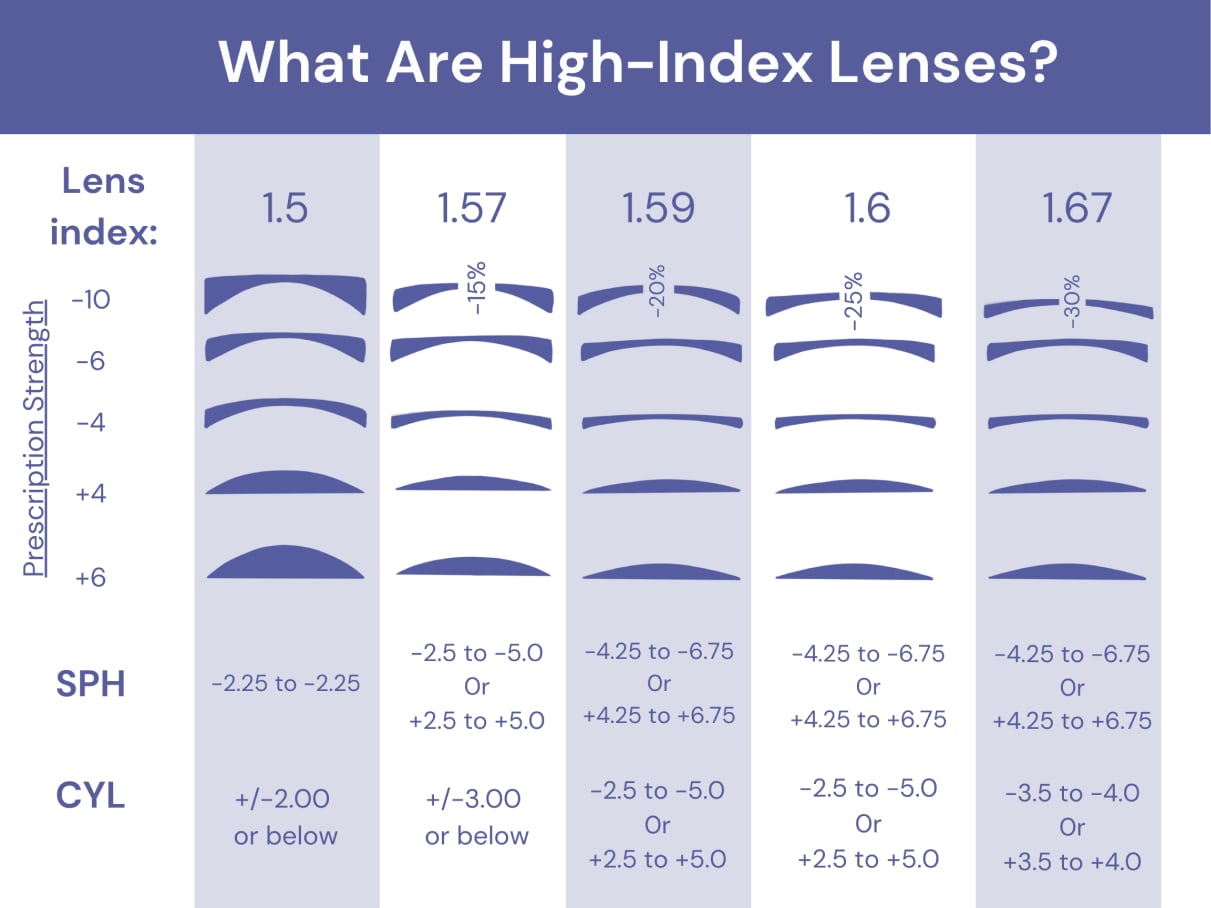
Selecting the right prescription lenses for glasses involves more than just addressing your vision correction needs; it also means choosing appropriate materials and features that align with your lifestyle. The lens materials and their specific characteristics play a pivotal role in the durability, comfort, and aesthetic appeal of your eyewear. Understanding these options is crucial for making an informed decision about your optical lenses.
Common Lens Materials for Eyeglasses
The evolution of lens technology has provided a variety of eyeglass lens materials, each with distinct advantages and disadvantages. Your choice of lens material directly impacts the weight, thickness, impact resistance, and optical clarity of your prescription lenses.
Glass vs. Polycarbonate Lenses: Durability and Clarity
When considering common lens materials for eyeglasses, the debate often begins with glass vs. polycarbonate lenses. Glass lenses, the traditional choice, offer superior optical clarity and exceptional scratch resistance. They provide the clearest possible vision, making them a preferred option for those who prioritize pristine visual quality. However, glass lenses are significantly heavier than their plastic counterparts and are less resistant to impact, meaning they can shatter more easily. This makes them less suitable for active individuals or children.
In contrast, polycarbonate lenses have become a popular modern alternative dueathing to their outstanding impact resistance and lightweight nature. These corrective lenses are virtually shatterproof, making them an excellent choice for safety glasses, sports eyewear, and children’s prescription lenses. While polycarbonate lenses may offer slightly less optical clarity than glass in some cases, and can be less scratch-resistant (though this is often mitigated by protective coatings), their superior durability and comfort due to reduced weight often outweigh these minor drawbacks.
High Index Lenses Benefits: When Thinner is Better
For individuals with stronger prescription lenses, high index lenses offer significant benefits. These eyeglass lenses are specifically engineered to be much thinner and lighter than standard plastic or polycarbonate lenses, even at higher prescription powers. The “index” refers to the material’s ability to bend light; a higher index means the material can bend light more efficiently, requiring less material thickness to achieve the same vision correction.
This lens technology provides a more aesthetically pleasing profile, reducing the “coke bottle” effect often associated with strong prescriptions. High index lenses minimize the perceived thickness of the spectacle lenses when viewed from the side, improving the overall appearance of the eyewear. They also help reduce peripheral distortion, offering enhanced optical clarity across the entire lens. When you’re selecting new prescription frames online in 2025, remember that pairing them with high index lenses can drastically improve both comfort and aesthetics, making your prescription frames online experience much more satisfying.
The Role of Lens Tint and Color for Prescription Lenses
Beyond material, the tint and color of your prescription lenses can significantly influence visual comfort and functionality, especially in varying light conditions. This customization enhances your vision correction for specific activities or preferences.
Neutral Tones for General Use: Gray and Copper
For everyday prescription lenses for glasses, neutral tones like gray and copper are highly recommended. These lens tints are designed to enhance vision without significantly altering true color perception. Gray lenses reduce overall light intensity evenly across the spectrum, making them ideal for bright, sunny conditions without distorting colors. This provides comfortable vision correction for general outdoor use. Copper-toned lenses, on the other hand, excel at enhancing contrast and depth perception, particularly in variable or low-light conditions like overcast days or misty environments. They are excellent for activities requiring detailed visual acuity, offering improved optical clarity and comfort.
Transition Lenses: Adaptability and Limitations for Driving
Transition lenses, also known as photochromic lenses, represent a remarkable lens technology that offers unparalleled adaptability. These prescription lenses automatically change from clear indoors to dark when exposed to ultraviolet (UV) light outdoors, providing continuous UV protection and eliminating the need to switch between prescription glasses and prescription sunglasses. This adaptability makes them a convenient all-in-one vision correction solution for many users.
However, transition lenses do have limitations for driving. Most car windshields are designed to block a significant amount of UV light, which is the primary activator for transition lenses. This means that while driving, your transition lenses may not darken sufficiently, or at all, leaving you exposed to glare. For dedicated driving needs or maximum darkness, prescription sunglasses are still the superior choice. Upgrading standard clear lenses to transition lenses can add approximately an additional $120 to the overall cost in 2025, reflecting the advanced lens technology and convenience they provide.
For a comprehensive range of prescription lenses for glasses that meet diverse visual requirements and lifestyle choices, exploring advanced options is key. Understanding the different lens materials and features ensures you select eyeglass lenses that offer optimal optical clarity, durability, and comfort for your unique needs. Discover high-quality prescription lenses for glasses designed to provide superior vision correction and enhance your daily visual experience.
Essential Coatings and Features for Optimal Prescription Lenses

Beyond selecting the ideal lens material and tint, the performance and longevity of your prescription lenses for glasses are significantly enhanced by various specialized coatings and features. These advanced lens technologies are designed to improve visual comfort, protect your eyes, and extend the lifespan of your eyewear. Understanding these crucial additions ensures you select truly optimal prescription lenses that meet all your visual and lifestyle demands.
Enhancing Clarity and Protection
Modern prescription lenses are not just about vision correction; they also incorporate advanced functionalities to improve optical clarity and provide vital protection for your eyes. These eyeglass lens enhancements are key to a superior visual experience.
Anti-Glare Coating for Glasses: Minimizing Reflections
One of the most highly recommended features for prescription lenses is an anti-glare coating for glasses, often referred to as anti-reflective (AR) coating. This innovative lens technology works by virtually eliminating reflections from both the front and back surfaces of your spectacle lenses. By minimizing reflections from light sources such as overhead lights, computer screens, or oncoming headlights at night, anti-glare coating dramatically improves visual comfort and clarity. It allows more light to pass through the lens to your eye, resulting in sharper vision and reducing eye strain, particularly during extended periods of digital use or night driving. Furthermore, it makes your eyes more visible through the lenses, enhancing the aesthetic appeal of your eyewear.
UV Protection Lenses for Glasses: Safeguarding Eye Health
Just as your skin needs sun protection, your eyes require UV protection. UV protection lenses for glasses are critical for safeguarding eye health against harmful ultraviolet (UV) A and B rays. Prolonged exposure to UV radiation can contribute to serious eye conditions over time, including cataracts, macular degeneration, and even certain types of eye cancers. Many prescription lenses in 2025 come with UV protection built into the lens material or as an added coating, blocking 100% of these damaging rays. This invisible shield provides essential, long-term protection for your delicate ocular tissues, making UV protection a non-negotiable feature for any prescription lenses, regardless of lens tint or material.
Modern Lens Technologies
The landscape of prescription lens development continues to evolve, bringing forth modern lens technologies that address the specific challenges of contemporary living, from digital screens to daily wear and tear.
Blue Light Filter Lenses Prescription: For Digital Screen Use
In 2025, with increasing reliance on digital devices, blue light filter lenses prescription options have become exceptionally popular. These corrective lenses are designed to filter out a portion of the high-energy visible (HEV) blue light emitted from computer screens, smartphones, tablets, and LED lighting. While research on the long-term effects of blue light is ongoing, many users report that blue light filter lenses help in potentially reducing digital eye strain, eye fatigue, and headaches associated with extended digital screen use. Some studies also suggest they may aid in improving sleep patterns by mitigating the disruption blue light can cause to the body’s natural circadian rhythm. This lens feature is a proactive step for individuals spending significant time in front of screens.
Scratch Resistant Coating: Prolonging Lens Lifespan
Despite advancements in lens materials, prescription lenses remain susceptible to scratches from daily handling and environmental factors. A scratch resistant coating is an incredibly valuable feature that adds a protective layer to the lens surface, significantly prolonging lens lifespan. While no coating can make lenses entirely scratch-proof, this hard, clear layer makes them far more resistant to minor abrasions that can impair optical clarity and diminish the effectiveness of your vision correction. It’s particularly important for softer lens materials like polycarbonate lenses, ensuring your eyeglass lenses maintain their pristine condition and continue to provide optimal vision for longer. When selecting your prescription lenses, especially if you’re also considering the overall aesthetic and durability of your frames, such as exploring the mens designer prescription glasses available in 2025, ensuring these essential coatings are included is vital for a complete and satisfying eyewear experience.
Investing in prescription lenses for glasses that incorporate these essential coatings and features ensures you receive not only precise vision correction but also enhanced comfort, superior protection, and extended lens durability. These additions transform standard corrective lenses into high-performance eyewear tailored to the demands of modern life. To explore a wide array of prescription lenses for glasses featuring these advanced coatings and technologies, allowing you to find the perfect combination of clarity, protection, and performance for your unique needs, discover high-quality prescription lenses for glasses designed for optimal visual outcomes.
Navigating Prescription Lens Replacement: Online vs. In-Store

Once you understand the array of essential coatings and features that enhance your prescription lenses for glasses, the next crucial step is deciding where to obtain or replace your lenses. In 2025, consumers have two primary avenues: online eyewear retailers and in-store opticians. Each option presents distinct advantages and considerations regarding convenience, cost-effectiveness, and the level of personalized service. Making an informed choice depends largely on your prescription complexity, budget, and desired turnaround time.
Online Eyewear Retailers: Convenience and Savings
Online eyewear retailers have revolutionized the way many acquire prescription lenses and complete eyewear. They offer a compelling blend of convenience and potential savings, making online lens replacement an attractive option for a broad customer base. This digital approach often streamlines the ordering process, allowing individuals to browse and purchase from the comfort of their home.
Benefits: Virtual Try-on and Discounts
A significant appeal of online eyewear platforms lies in their innovative tools and competitive pricing. Many online retailers in 2025 offer advanced virtual try-on tools, allowing customers to digitally superimpose eyeglass frames onto their own face using a webcam or uploaded photo. This feature helps visualize how different styles of glasses, including potentially fashionable reading glasses womens options, might look before committing to a purchase. Beyond visualization, online platforms frequently provide promotional discounts and exclusive offers for both new and returning customers. These cost-effective solutions can result in substantial savings on prescription lenses and frames compared to traditional brick-and-mortar stores, making affordable prescription lenses more accessible.
Considerations for Online Services: Shipping and Turnaround Time
While online convenience is high, prospective buyers must consider the practical aspects of shipping and turnaround time. The delivery speed for prescription lenses ordered online can vary significantly between different eyewear providers. For instance, some specialized services like “Overnight Glasses” might offer incredibly rapid order fulfillment, potentially delivering new lenses in as little as a day. Conversely, larger online optical retailers such as Target Optical may have turnaround times extending up to 14 business days or even longer, depending on the lens type and prescription complexity. It’s crucial to verify these details before placing an order to manage expectations regarding when your replacement lenses will arrive.
In-Store Opticians: Personalized Service and Immediate Needs
For many, particularly those with specific visual requirements or a preference for direct interaction, in-store opticians remain the preferred choice for prescription lens replacement. The personalized service offered in a physical optical shop can provide peace of mind and address immediate needs more effectively than online alternatives. This face-to-face approach ensures a tailored eyewear experience.
Optometrist Recommendation for Lenses: Expertise for Complex Prescriptions
A key advantage of visiting an in-store optometrist or optician is the expert guidance they provide. Optometrists are highly recommended for individuals with complicated prescriptions, such as those requiring high power lenses, prism correction, or progressive lenses. Their professional expertise ensures precise measurements are taken, which is critical for optimal vision correction and comfort. They can also offer valuable advice on the most suitable lens materials, coatings, and frame choices that complement your face shape and vision needs, ensuring accurate lens selection and a perfect fit. This hands-on approach is invaluable for achieving specialized lens solutions.
Same-Day Service and Frame Approval: LensCrafters Example
For those in urgent need of new prescription lenses, certain in-store locations offer expedited services. Some optical chains, like LensCrafters, are known for their potential to provide same-day lens replacement on a case-by-case basis. This express service is often contingent on the lens prescription being within their in-stock range and the existing frame being in suitable condition for lens fitting. The ability to receive immediate replacement for your prescription lenses can be a lifesaver, ensuring you’re not without your crucial vision correction for an extended period. The direct interaction also allows for immediate frame approval and adjustments, ensuring comfort right away.
Choosing between online eyewear retailers and in-store opticians for your prescription lens replacement ultimately depends on your priorities. Whether you value convenience and savings or personalized service and immediate solutions, both options offer distinct benefits for acquiring your prescription lenses for glasses. To explore a diverse range of prescription lenses for glasses that can be ordered to fit your specific needs, whether online or with the knowledge to discuss with an optician, discover quality prescription lenses for glasses that offer clarity, protection, and performance tailored to your vision.
Costs and Coverage: Affording New Prescription Lenses
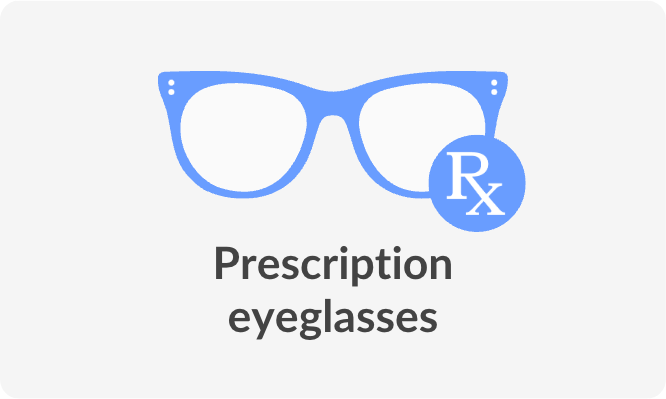
Understanding the financial aspects of acquiring new prescription lenses for glasses is crucial for budgeting and making informed decisions. In 2025, a range of factors influence the total cost, from the lens type and features to the availability of vision insurance and flexible spending accounts. Navigating these elements effectively can significantly impact the affordability of your vision correction.
Understanding Prescription Lens Replacement Cost
The cost of prescription lenses can vary widely, reflecting the complexity of the vision needs and the chosen enhancements. This section delves into the average expenses and price variations you might encounter when seeking lens replacement.
Average Cost of Prescription Lenses: From Basic to Complex
When considering prescription lens replacement, the average cost is a primary concern for many consumers. Simple lens replacement, such as for basic single-vision lenses, can often be obtained for under $50. However, for individuals with complex prescriptions requiring high-power lenses, progressive lenses, or specialized lens treatments and coatings like anti-reflective or blue light filters, the expense can easily reach several hundred dollars. Generally, in 2025, the average basic lens replacement typically costs between $70 and $80, excluding additional taxes and shipping fees if purchased online. These figures represent the bare lens cost without frame considerations.
Price Variances by Lens Type and Features
The price of prescription lenses is highly dependent on the lens type and the integrated lens features. Basic single-distance lenses, suitable for either distance vision or reading correction, may start as low as $39 plus an additional $15 replacement fee at some outlets. Opting for lens upgrades significantly impacts the final eyewear cost. For instance, transition lenses (or photochromic lenses) that automatically darken in sunlight can add approximately $120 to the overall lens price. Other premium lens features like high-index materials for thinner, lighter lenses, polarized coatings for glare reduction, or specialized digital free-form lenses for optimal clarity in progressive prescriptions will each contribute to a higher final price. Understanding these cost variations allows you to prioritize lens enhancements based on your budget and visual needs. To explore a diverse array of prescription lenses with various features and compare their pricing, discover quality prescription lenses for glasses that match your budget and visual requirements.
Leveraging Vision Insurance for Eyeglasses
Maximizing your vision benefits through insurance plans or tax-advantaged accounts can significantly reduce the out-of-pocket cost of eyeglasses. It’s essential to understand which plans are accepted and how to utilize available funds.
Accepted Plans at Major Retailers: Target Optical and ContactsDirect
A significant advantage for consumers in 2025 is the widespread acceptance of vision insurance plans by major eyewear retailers. Large optical chains and online platforms, such as Target Optical and ContactsDirect, often partner with a broad spectrum of insurance providers. For example, Target Optical boasts acceptance of over 100 different vision insurance plans, making prescription lenses and eyewear purchases more accessible to a vast customer base. Before purchasing your new lenses, it is always advisable to verify your specific vision benefits and coverage details directly with your insurance provider or the eyewear retailer to confirm in-network options and copayments. This ensures you maximize your insurance coverage for prescription eyewear. When considering comprehensive vision solutions, including outdoor clarity, it’s worth exploring options like sunglasses with prescription, which can often be covered or partially covered by the same vision plans that handle your regular prescription lenses.
Flexible Spending and Health Savings Accounts: Maximizing Benefits
Beyond traditional vision insurance, Flexible Spending Accounts (FSA) and Health Savings Accounts (HSA) offer valuable avenues for affording prescription lenses and other optical services. These tax-advantaged accounts allow individuals to set aside pre-tax dollars for eligible healthcare expenses. In 2025, funds from both FSA and HSA can be fully utilized for prescription lenses, eyeglass frames, contact lenses, and even associated eye care services, whether you choose to purchase eyewear online or from an in-store optician. This provides a significant opportunity to maximize benefits and reduce your overall out-of-pocket expenses for vision correction. It’s a smart strategy for many to allocate a portion of these funds specifically for their annual eyewear needs or unexpected lens replacement.
Ensuring a Perfect Fit and Prescription: Key Considerations for Prescription Lenses
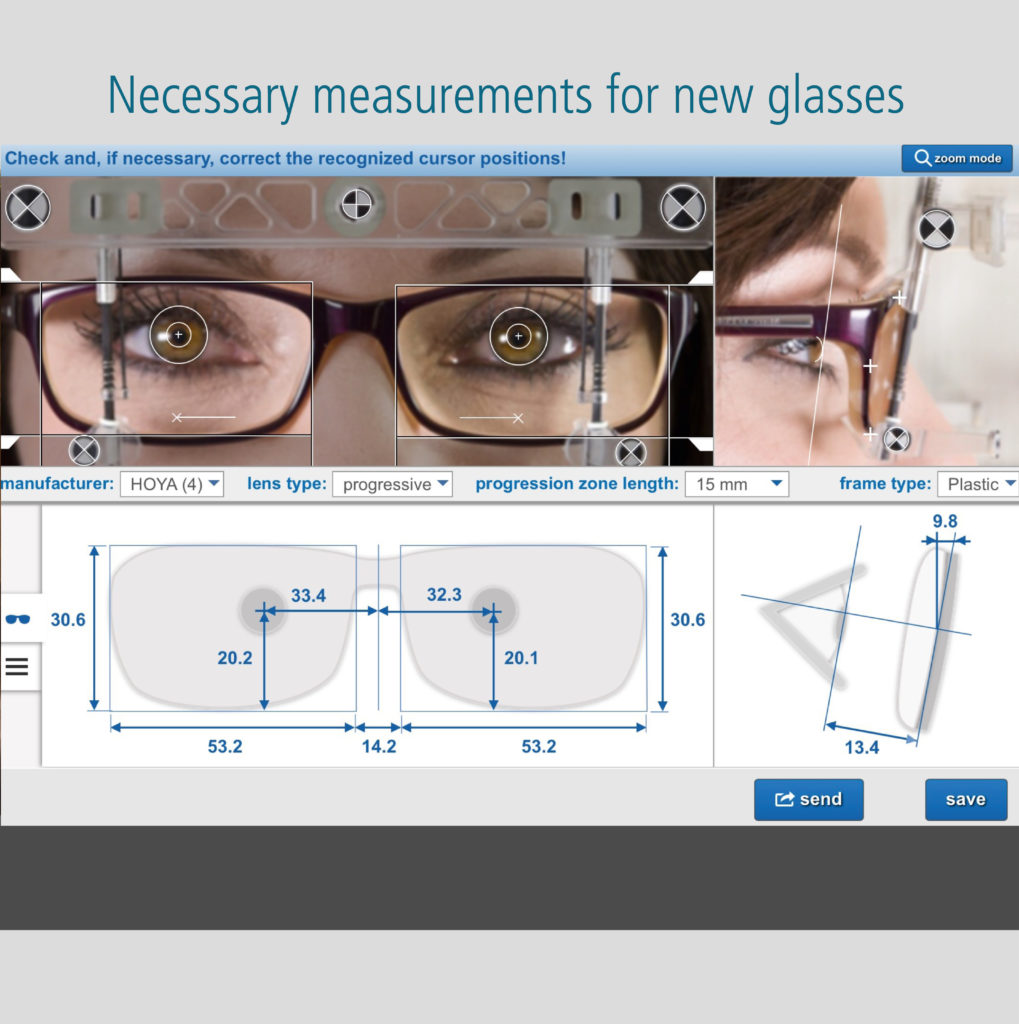
Once you’ve navigated the financial aspects of acquiring new prescription lenses for glasses, the next critical step is ensuring they fit perfectly within your chosen frames and provide optimal vision correction. This involves evaluating the condition of your existing eyeglass frames and understanding the crucial role of professional measurement and expert advice. Getting this right is paramount for comfort, visual clarity, and the longevity of your eyewear.
Can Old Frames Get New Lenses? Assessing Frame Condition
A common question for eyeglass wearers is whether their current frames are suitable for new prescription lenses. While lens replacement can be a cost-effective solution, the durability and overall condition of the existing frame are vital considerations.
Durability and Material of Existing Frames for Lens Replacement
The material and age of your eyeglass frames play a significant role in determining their suitability for new lens replacement. Older plastic frames, for instance, can become brittle over time due due to exposure to UV light, oils from skin, and general wear. This increased fragility raises the risk of breakage or cracking during the lens installation process, especially when applying pressure to secure the new corrective lenses. Conversely, metal frames often maintain their structural integrity better, making them more resilient to the stresses of lens insertion. Before committing to reusing frames for your prescription lenses, an optician or eyewear specialist should carefully inspect them for any signs of weakness, stress fractures, or warping that could compromise the frame's durability or the proper seating of the new lenses.
Scratched Lens Replacement Options: When to Replace vs. Repair Existing Lenses
Discovering scratched lenses on your eyeglasses can be frustrating, impacting visual clarity and aesthetics. In 2025, replacing scratched lenses is almost always the recommended solution, rather than attempting repair. While some minor surface scratches might be temporarily lessened with specialized polishing kits, these methods often remove protective coatings or distort the lens surface, leading to worse optical quality. For any significant scratching that affects your vision, opting for new prescription lenses is a common and typically more effective and affordable alternative to purchasing an entirely new pair of glasses. This allows you to retain your beloved eyeglass frames while restoring crystal-clear vision.
The Importance of Professional Measurement and Advice for Prescription Lenses
Achieving optimal vision and comfort with your prescription lenses hinges on precise measurements and expert guidance. This ensures that the lenses are crafted and fitted to your unique visual needs and facial anatomy.
Accurate Measurements for Optimal Vision with New Lenses
For new prescription lenses to function effectively, accurate measurements are absolutely crucial. Optometrists and opticians are highly trained eye care professionals equipped with specialized tools to take precise measurements. These include pupillary distance (PD), which is the distance between the centers of your pupils, and optical center height, which determines where your eye looks through the lens. Even small discrepancies in these measurements can lead to visual discomfort, eye strain, or even a perceived blurriness, despite having the correct prescription. Proper lens placement within the frame directly impacts visual comfort and acuity, especially for progressive lenses or high-power prescriptions. Seeking professional measurement ensures your prescription lenses are perfectly centered, providing the clearest and most comfortable vision experience. If you are also considering how new frames might look on you, or exploring different styles while ensuring a perfect fit without leaving home, trying on glasses virtually can be an excellent way to visualize your options before a professional fitting.
Avoiding Damage During Replacement: Risks and Responsibilities with Your Eyewear
When you choose to have new prescription lenses inserted into your existing frames, it’s important to be aware of potential risks. While optical professionals are highly skilled, there is always a slight chance of frame damage during the lens replacement process, particularly if the frames are old, brittle, or have unseen weaknesses. Some eyewear services or online retailers may explicitly state that they are not responsible for damage to customer-supplied frames during the lens replacement procedure. This disclaimer protects them from liability for pre-existing frame conditions that might not be apparent until the process begins. It is always wise to discuss this policy with your optician or eyewear provider beforehand and consider the age and material of your frames before deciding to replace lenses rather than purchasing new glasses entirely.
To explore a wide selection of prescription lenses for glasses that prioritize both optical clarity and durability for various frame types, you can find high-quality prescription lenses for glasses that meet your visual needs and potentially extend the life of your favorite frames.
Top Providers for Prescription Lens Replacement: A Comparative Look
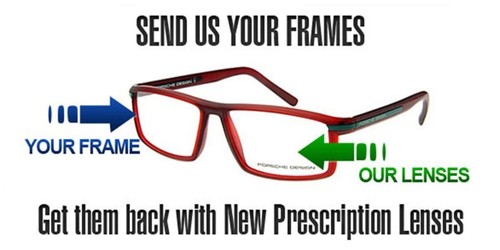
Choosing the right provider for your prescription lens replacement is as crucial as selecting the lenses themselves. In 2025, consumers have a wealth of options, ranging from convenient online services to traditional in-store experiences. Each platform offers unique advantages regarding cost, turnaround times, and included features, making a comparative analysis essential for informed decision-making. This section delves into the leading eyewear providers, helping you identify the best fit for your vision correction needs.
Best Online Prescription Lens Services
The digital landscape has revolutionized how eyeglass wearers access prescription lenses. Online lens replacement services offer unparalleled convenience and often more competitive pricing, making them a popular choice for many seeking new lenses for their existing frames.
Reviews and Specializations: Comparing Online Eyewear Retailers
Several prominent online eyewear retailers specialize in providing prescription lenses for a variety of frames. Understanding their core strengths can guide your choice for lens replacement.
- 39DollarGlasses: True to its name, 39DollarGlasses is renowned for its highly
affordable pricing, starting at just $39 forlenses. This makes it an ideal option for budget-conscious individuals looking for acost-effective lens replacementwithout compromising on basicvision clarity. Their specialization lies in makingprescription eyewearaccessible. - LensDirect: LensDirect distinguishes itself by including essential
protective coatingsas standard. When you orderprescription lensesfrom them,anti-glare,UV protection, andscratch-resistant coatingsare typically part of the package, enhancing thedurabilityandvisual comfortof yournew lensesright out of the box. This comprehensive offering adds significant value foreyewear users. - Overnight Glasses: For those in a hurry, Overnight Glasses lives up to its promise of speed. They boast exceptionally
rapid turnaround times, often deliveringprescription lenseswithin just two business days. This accelerated service is invaluable for individuals needing urgentlens replacementor those who simply can’t wait to restore theirclear vision. - Eyeglasses.com: If
premium lensesanddesigner framesare your priority, Eyeglasses.com caters to the higher end of the market. They offer an extensive selection ofhigh-quality prescription lensesand specialize in fitting them intoluxury and designer eyeglass frames, ensuring that youreyewearnot only provides optimalvisionbut also reflects sophisticated style.
Turnaround Times and Included Features
Beyond specialization, the speed of service and what’s bundled with your prescription lenses can heavily influence your lens replacement decision.
- Boomerang Lenses generally process
lens replacement orderswithin 7-10 business days. This standard timeframe allows for careful crafting of yourprescription lenses. - LensFactory typically requires 10-12 business days for
lens manufacturingand shipping. It’s important to note that while they offer qualityprescription lenses,anti-glare coatingsmay incur an additional cost, which is a factor to consider when evaluating the overallaffordabilityandvalueof yournew lenses. Theseturnaround timesreflect the balance between speed and precision inoptical crafting.
In-Store and Hybrid Options for Prescription Lens Replacement
While online services offer convenience, in-store eyewear providers provide the benefit of in-person service, professional measurement, and immediate expert advice, which can be invaluable, especially when dealing with existing eyeglass frames.
LensCrafters: In-Person Convenience and Frame Limits
LensCrafters is a well-established name known for its widespread physical locations, offering in-person service for eye exams and prescription lens replacement. The advantage of visiting a store is the ability to have an optician physically inspect your existing frames and take accurate measurements directly. However, it’s crucial to note that LensCrafters evaluates the suitability of customer-supplied frames for lens replacement on a case-by-case basis. They prioritize frame durability and the proper seating of new lenses. While many frames are accepted, some older or more fragile frames might be deemed unsuitable to prevent damage during lens insertion. When considering high-quality, durable frames like those found in collections such as oliver peoples glasses, their robust construction often makes them excellent candidates for lens replacement at services like LensCrafters.
Target Optical: Budget-Friendly Frames and Comprehensive Services
Target Optical presents a compelling hybrid option, combining the convenience of a retail giant with comprehensive optical services. They offer a wide selection of stylish and budget-friendly frames, making them a great choice for those looking to replace lenses within an affordable new frame. Beyond prescription lens replacement, Target Optical provides eye exams and various lens options, including single vision, bifocal, and progressive lenses, catering to diverse vision correction needs. This makes them a convenient, one-stop shop for eyewear solutions, from getting your prescription updated to selecting new prescription lenses for glasses or entirely new eyewear.
Ultimately, selecting the right provider for your prescription lens replacement depends on your priorities: cost, speed, included features, or in-person service. To explore a comprehensive range of prescription lenses for glasses that cater to diverse needs and preferences, and to find the perfect fit for your vision correction requirements, you can discover a wide selection of high-quality prescription lenses for glasses online. This link will direct you to a vast array of options, allowing you to compare features and pricing to make an informed decision for your next eyewear upgrade.
Your Path to Crystal-Clear Vision: Making Informed Eyeglass Lens Choices
Navigating the world of eyeglass lenses can seem daunting, but armed with the right knowledge, you are empowered to make choices that profoundly impact your visual clarity and daily comfort. This guide has illuminated the critical aspects of selecting optimal prescription lenses for glasses, beginning with the foundational importance of an up-to-date prescription and accurate pupillary distance measurement. Remember, your eye health and precise vision correction start with a comprehensive eye exam, ensuring your lenses are perfectly tailored to your unique refractive error.
We explored the diverse landscape of lens types, from single vision for specific focal needs to progressive lenses offering seamless transitions across multiple distances. For specialized requirements, understanding bifocal and astigmatism correction lenses ensures every visual challenge is met with precision. Beyond correction, the material of your lenses—whether lightweight, impact-resistant polycarbonate, optically superior glass, or thin, aesthetic high-index options—plays a crucial role in durability, comfort, and appearance. Paired with high-quality frames, perhaps even japanese made glasses frames for unparalleled craftsmanship, your eyewear becomes a true extension of your vision needs.
Furthermore, the power of modern lens technologies, including essential coatings and features, cannot be overstated. Anti-glare coatings minimize distracting reflections, while robust UV protection lenses safeguard your long-term eye health from harmful rays. For today’s digital world, blue light filter lenses offer relief from digital eye strain, and scratch-resistant coatings significantly prolong the lifespan and clarity of your investment. These enhancements elevate your basic prescription into high-performance eyewear.
Finally, we weighed the benefits of online eyewear retailers offering convenience and potential savings against the personalized service and expert measurements provided by in-store opticians. Understanding the cost variations based on lens type and features, along with leveraging vision insurance, FSA, or HSA accounts, ensures that acquiring new or replacement prescription lenses for glasses is both affordable and accessible.
Ultimately, choosing your eyeglass lenses is a journey towards enhanced well-being. By considering your prescription accuracy, lifestyle, material preferences, protective coatings, and the most suitable purchase avenue, you can confidently invest in eyewear that provides unparalleled optical clarity, comfort, and durability. Prioritizing these elements ensures that your investment in prescription lenses for glasses truly pays dividends in crisp, clear vision every day.

Leave a Reply